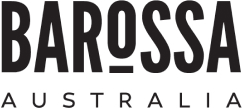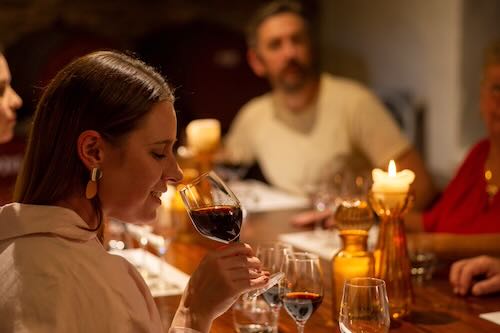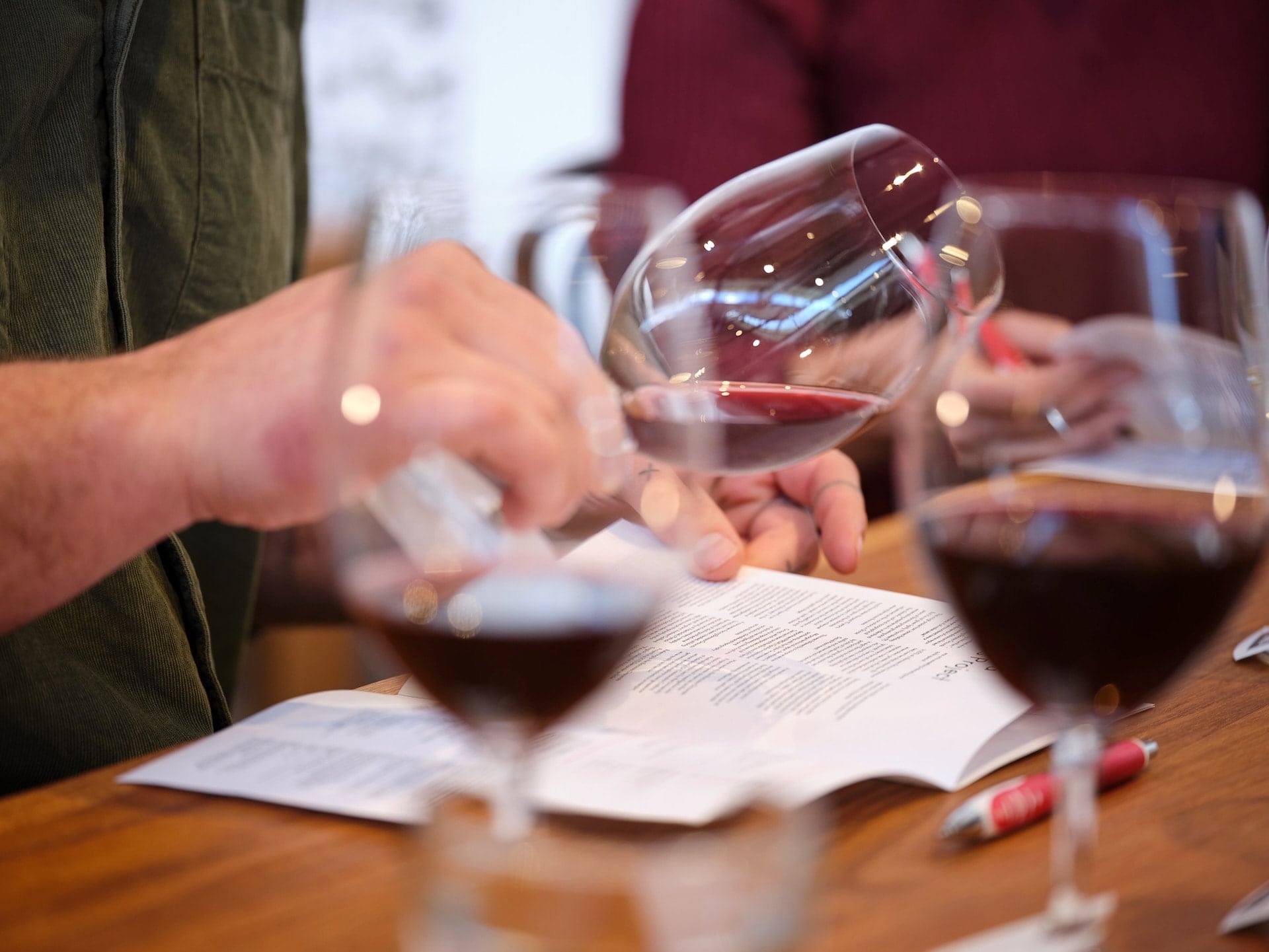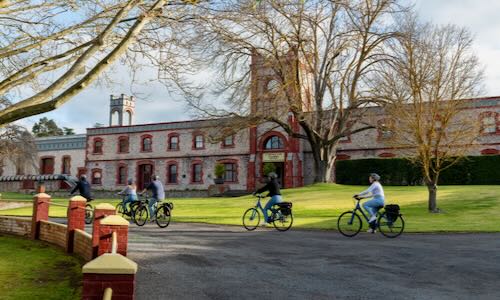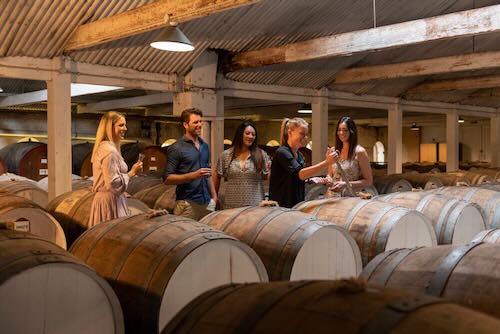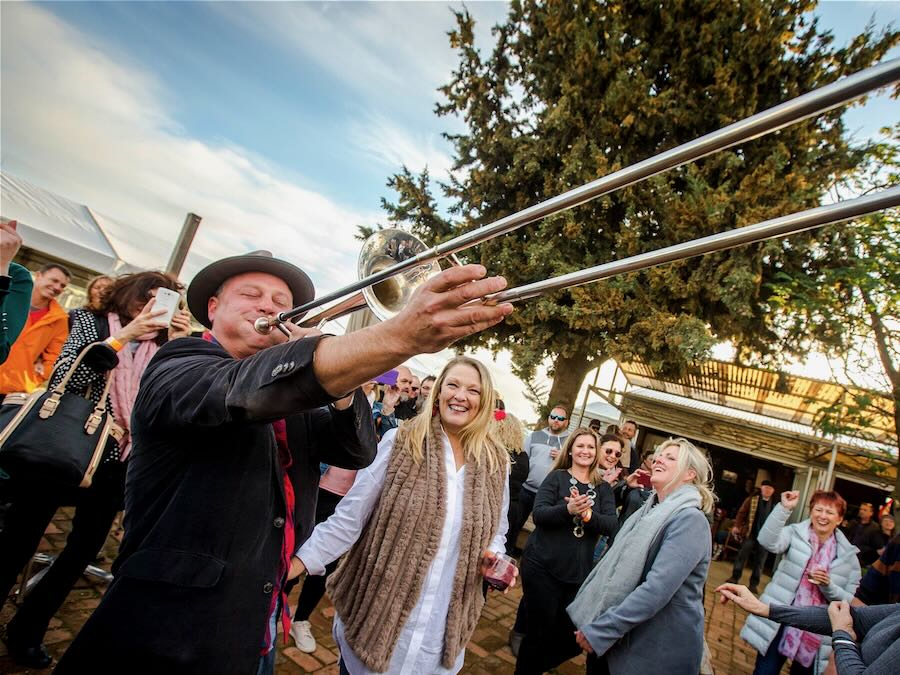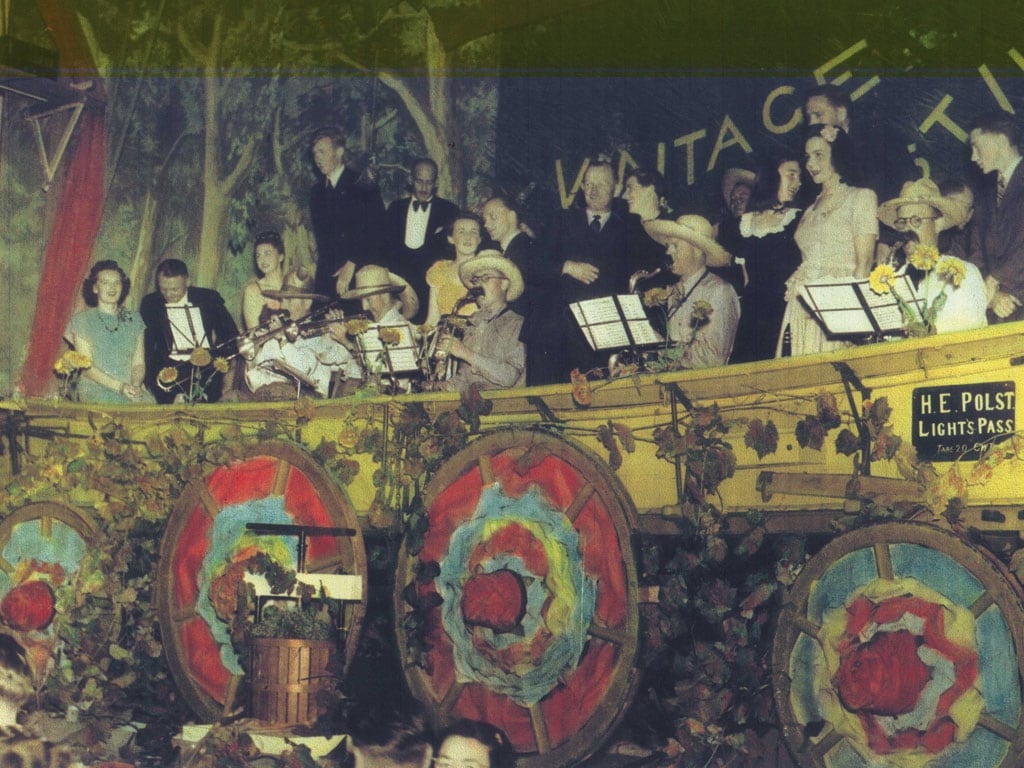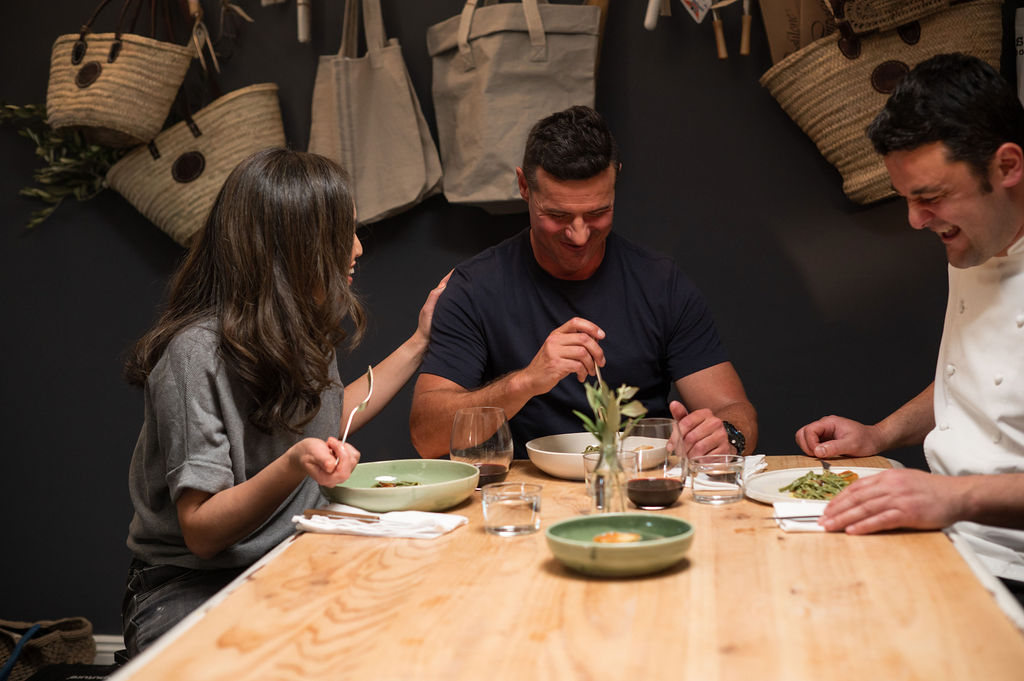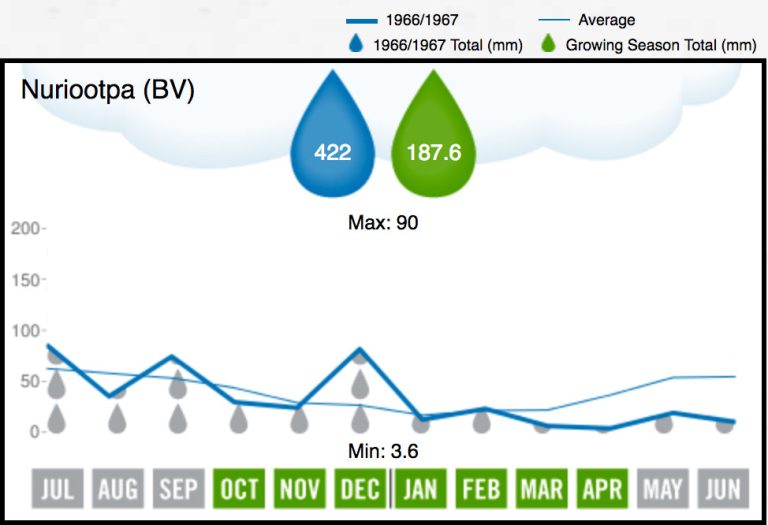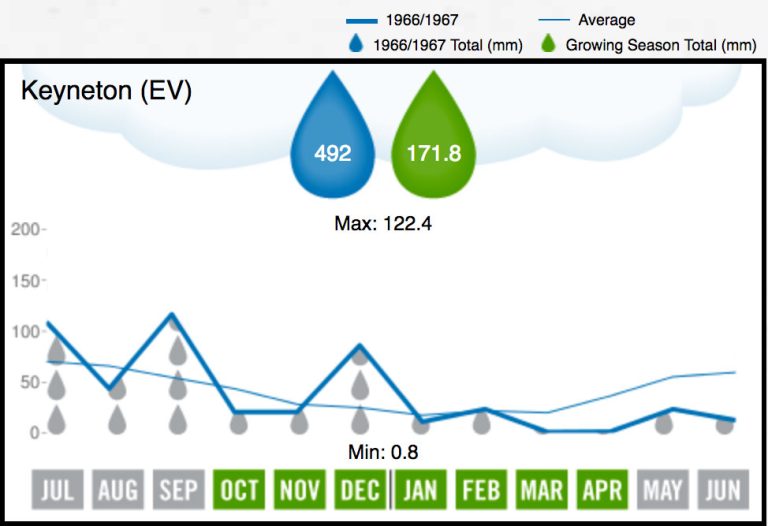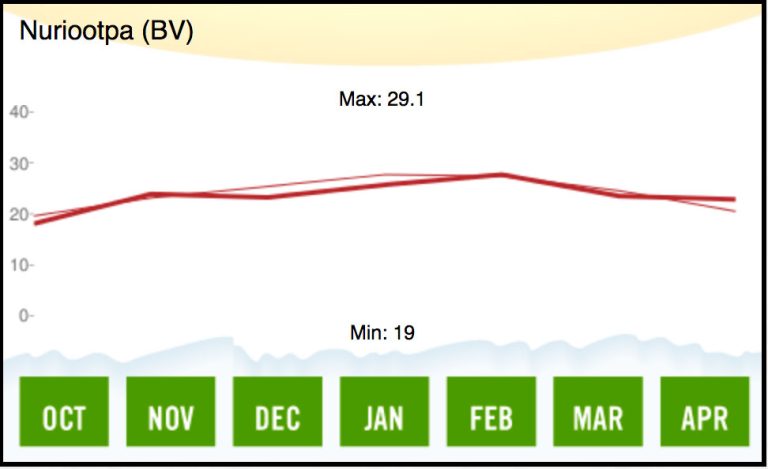Summary
A warm, dry, late vintage followed above average growing season rainfall producing medium weight, fruit-driven reds.
In 1967 there were 6,934 hectares of vineyards in Barossa and 29,109 tonnes of wine grapes were crushed in that vintage.
Highlights
The introduction of pectolytic enzymes and dried yeasts were innovations which became widespread during the late 1960s.
Peter Lehmann took his first Jimmy Watson Trophy – a 1966 Saltram Cabernet Sauvignon which won the 1967 trophy.
Winery refrigeration was introduced at Saltram albeit on a small scale.
The SA Department of Agriculture met grower demands by handing over four new grape varieties: Pinot Noir, Gamay, Gewurztraminer and Sylvaner.
Penfolds and The Australian Wine Research Institute carried out white wine research using various yeasts and fermentation and oxygen techniques. The company also increased red wine production and the purchasing of new small American oak.
Sources
SA Wine Grape Crush Survey, Vinehealth Australia and ‘Barossa Vintages: a wine history from 1842’, Peter Fuller

